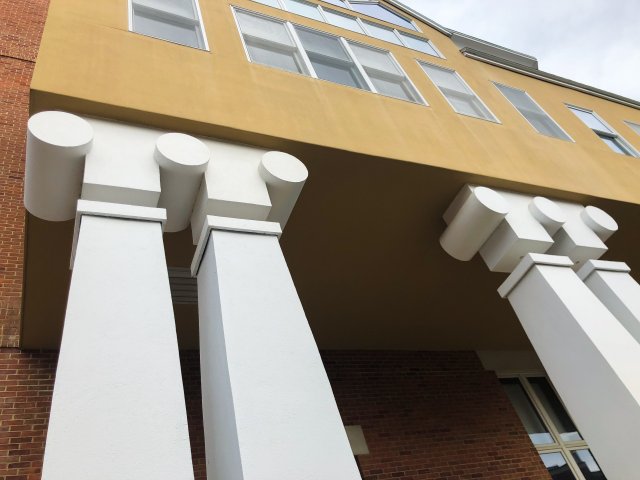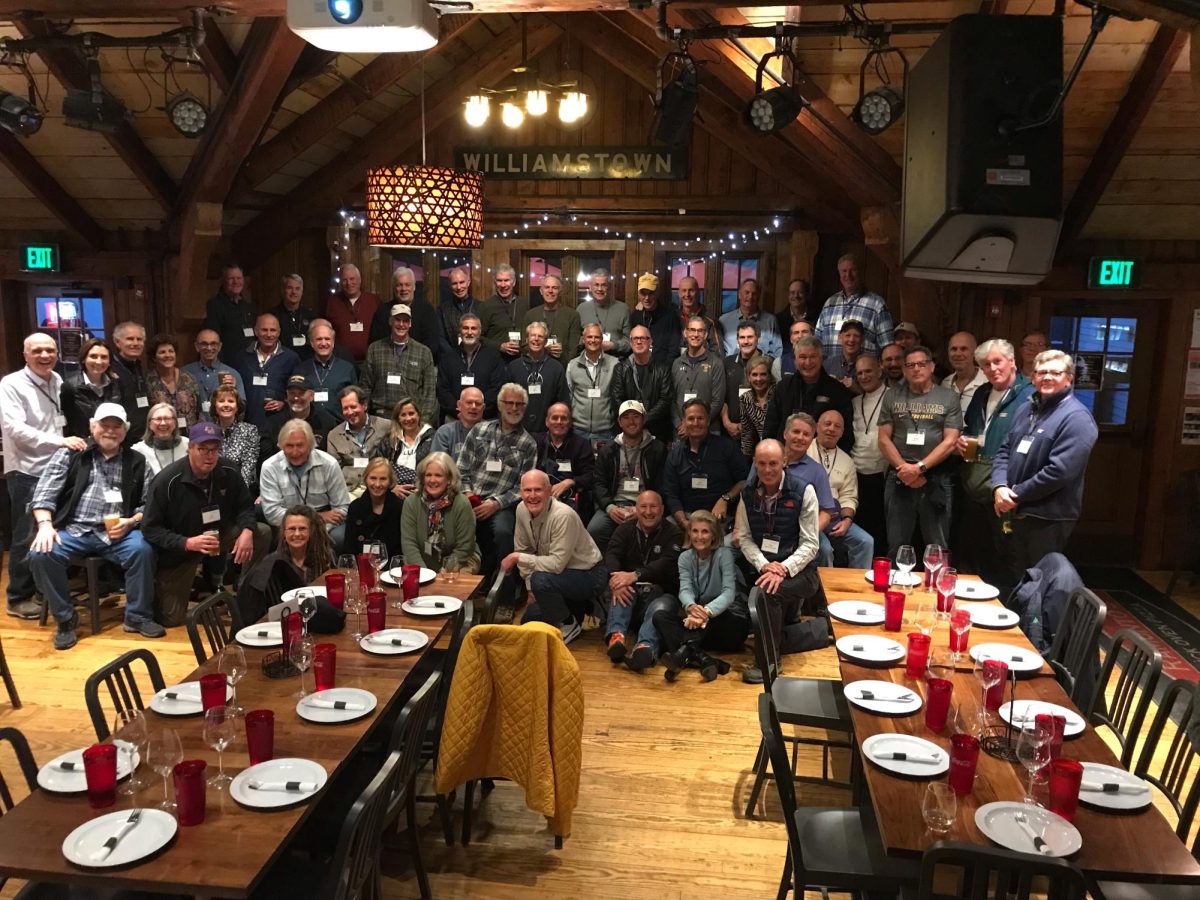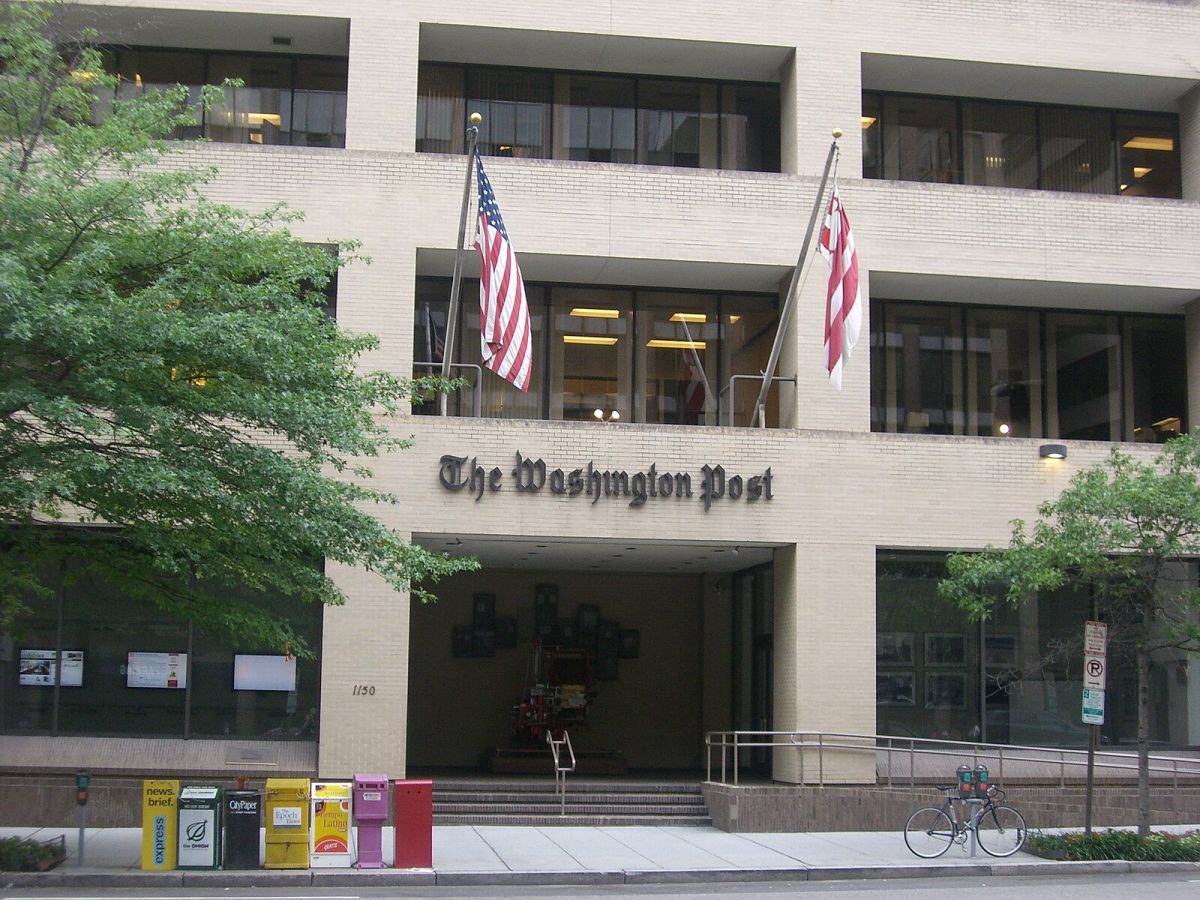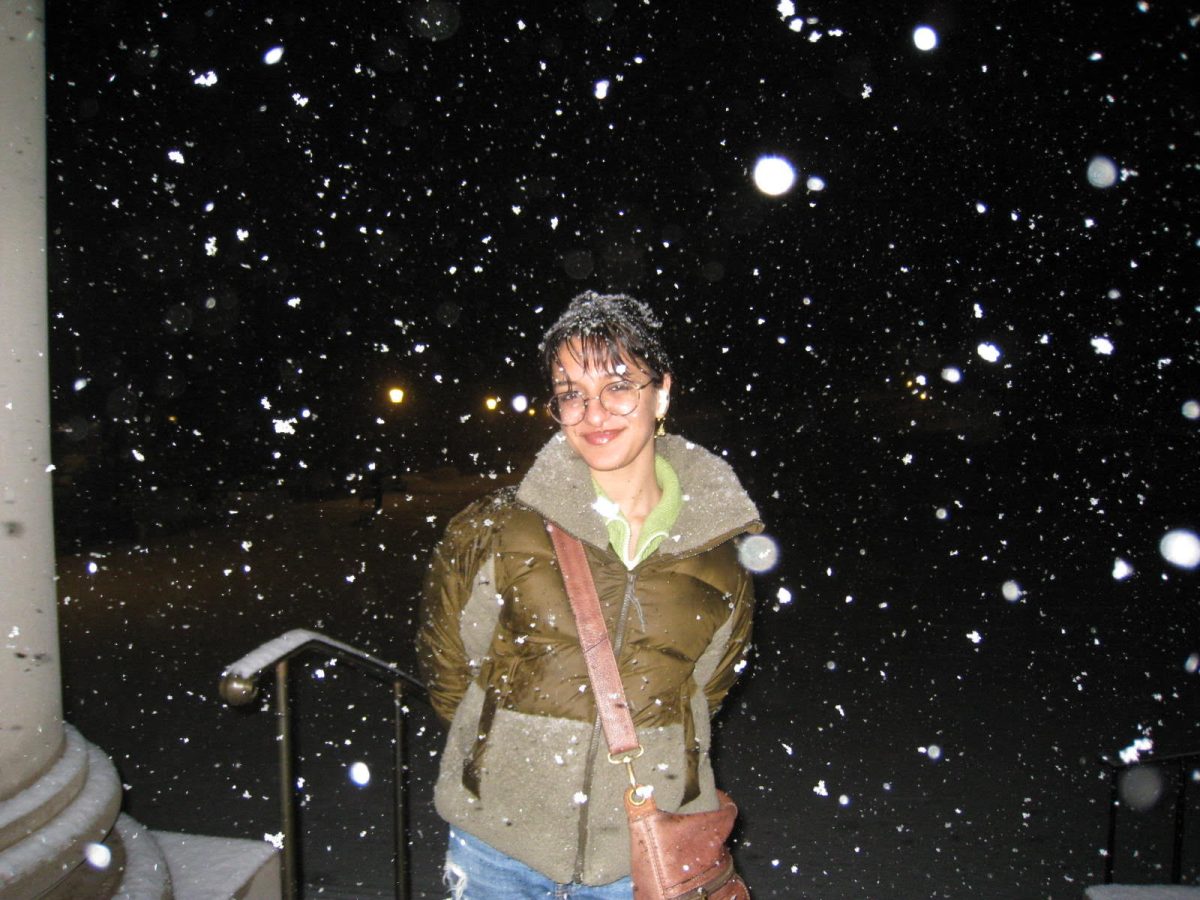
During his 25-year career at the College, Professor of Art History Michael Lewis has watched hundreds, if not thousands, of tour groups pause in the courtyard below his office window on the south side of the Williams College Museum of Art (WCMA). Each time, he hears the same speech delivered more or less word-for-word – “Like Old Faithful,” he recalled, “Every 20 minutes, it would come back. ‘See those two columns? Well, there’s an interesting story behind them…’”
According to the oft-repeated anecdote, the so-called “ironic columns” at the back of Lawrence Hall were not originally included in the 1986 expansion, leaving the southern entrance bare. Predictably, the administration balked at this, insisting that the architect add columns to conform to the conventional aesthetic of an educational institution like the College. As the story goes, he begrudgingly agreed, but instead installed the snide design that we see today.
Listening to this story time and time again over the years, Lewis’ frustration finally came to a head. One day, seeing a tour group approaching, he picked up a sharpie and a piece of cardboard and fashioned a sign, sticking it out through the window as the tour guide below gave their spiel. The sign displayed the words, “NOT TRUE.”
The actual history of the “ironic columns” (a joke credited to art historian Whitney Stoddard ’35) begins in the early 1980s with the $7.5 million expansion of Lawrence Hall and WCMA. The architect in question was the eccentric Charles Moore, a titan of postmodernism and the former dean of the Yale School of Architecture. Included in his initial models for the sizable extension was a column of a different nature – a proposed sculpture by Patrick and Anne Poirier, in which a massive, fractured column would lay on its side as though it had collapsed right in the middle of the courtyard.
Had the budget allowed its inclusion, the sculpture would have led visitors down a path on the western side of the building, at the end of which they would find the museum’s entrance. Should they continue south instead of entering, they would come around the building, where they would find the cantilevered overhang which now holds faculty offices – such as that of Lewis – and the two ironic columns beneath. In fact, the columns were not only included in the initial plans, but the doorway that they mark was at one point also slated to be the museum’s main entrance.
Lecturer in Art Ben Benedict, who worked closely with Moore at Yale, forcefully dispelled the myth that the columns were simply put there out of spite.
“This was an easy way for Moore to add detail and humor, using means that combined both the familiar and the surprising,” Benedict said. “Moore had a positively elven sense of humor. He would often incorporate odd surprises into his work, references to the past. Always looking to use humor in funny little ways.”
That flair for humor reappears in one of Moore’s most well-known pieces, the Piazza d’Italia in New Orleans. The postmodern plaza not only contains several absurd columns of its own, but also several sculptural carvings of Moore’s face, each of which spurts a stream of water through its mouth.
Details like these are, as Benedict put it, “very characteristic of his playful nature: doing a lot with little financial cost.” Benedict also praised the aesthetic value provided by the columns, saying that “the backside of the museum really needed them. Something had to go there to take attention away from that soaring, overbearing wall above.”
E.J. Johnson ’59, professor emeritus of art and the editor of a book on Moore’s work, continued that thread, contextualizing the columns as an extension of Moore’s postmodern style.
“Part of the game of postmodern architecture was to play around with elements of the past, to treat them ironically,” Johnson said. “Personally, I’m a great enthusiast of the columns. I’ve always thought of them as sort of emulating the Spanish inverted exclamation points.”
Johnson, who was teaching at the College when the columns were installed, remembers being disappointed in the general reaction on campus at the time.
“Most people were dumbfounded by them,” he said. “If they’d taken art history 101, perhaps they would have understood what was going on.” Unfortunately, that confusion lingers today, augmented by the urban legend that Lewis has heard tour guides perpetuate for so long.
Whether observers are more inclined to agree with DesMeules or Johnson, all should at least consider the actual history behind the columns and come see them not as a mark of spite but, in the words of Lewis, as “something lighthearted, that tells you that history is with us, and that history is not solemn. We make use of it, we have fun with it and we approach it as an equal.”








